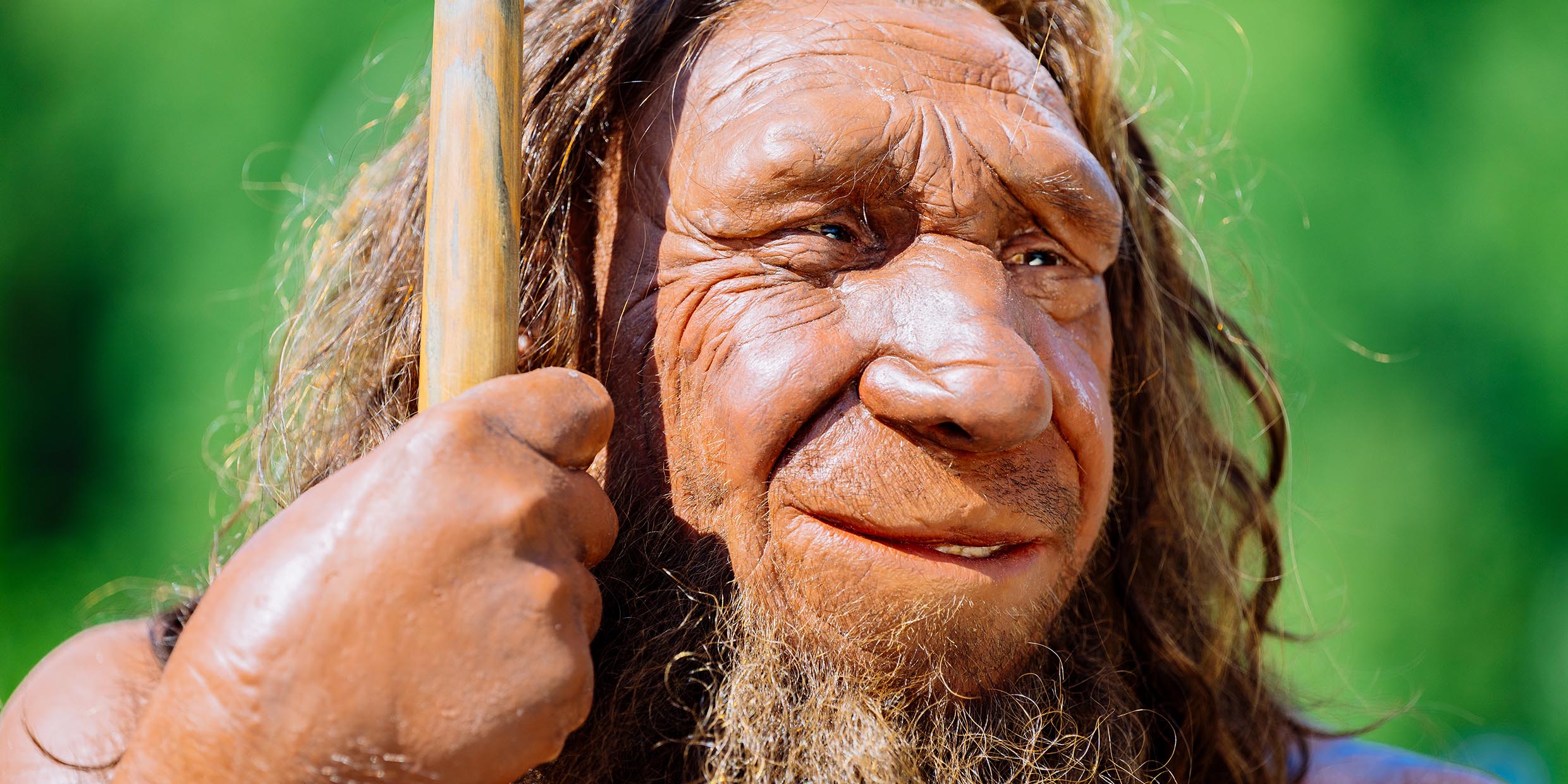Originally published 2 November 1998
Neanderthal. For most people, the word evokes a hulking, hairy, thick-necked brute, a “missing link” sort of creature who occupied a place on the developmental scale somewhere between the gorilla and modern man.
Recent evidence from the field tells a rather different story.
Recovery of mitochondrial DNA from a Neanderthal skeleton several years ago suggests that Neanderthals and modern humans diverged from a common stock at least half a million years ago, probably in Africa, then evolved along parallel lines. Ancestors of the Neanderthals eventually arrived in Europe and western Asia, where they thrived near the margins of ice age glaciers.
Apparently, they made stone tools, clothing, and shelter, used fire, decorated their bodies with ornaments, and occasionally buried their dead. There is circumstantial evidence that they cared for the aged and handicapped.
Certainly, their brains were as capacious as our own.
Then, around 40,000 years ago, their territories were invaded by Cro-Magnons, our immediate ancestors. For thousands of years the two branches of the human family lived side by side. There is no convincing evidence of interbreeding; they may have been separate species, unable to produce offspring.
The Neanderthals were no match for their more technologically-advanced neighbors, and were slowly driven to oblivion. Their last redoubt seems to have been the southern part of the Spanish peninsula.
The Neanderthal extinction is one of the large dramas of human history — a devastating instance of genocide — and certainly the most momentous loss of biodiversity ever caused by our species.
History is written by the winners, says Ian Tattersall, curator of the Anthropology Department at the American Museum of Natural History in New York, and the story of Neanderthals is written by Cro-Magnon descendants for an audience of Cro-Magnon descendants. Neanderthals were losers, and there is no more irrevocable way of losing than extinction.
An illustration of a Neanderthal male in H. G. Wells’s The Outline of History, published in the 1920s, shows a face that is sour and simian, with dull, squinty eyes. “Its thick skull imprisoned its brain, and to the end it was low-browed and brutish,” wrote Wells.
At that time, Neanderthals were well-known from many skeletal remains found in Europe and western Asia. It was clear they had lived in those places for several hundred thousand years, during the height of the ice ages, only to disappear from the fossil record about 30,000 years ago. According to the standard story of Wells’s generation, the “hairy,” “ugly,” “dim-witted” Neanderthals were replaced — and rightly, too — by the superior, bright eyed, intelligent Cro-Magnons.
But, of course, bits of skull and bone reveal nothing about personality, intellect, language or culture, and very little about what might have caused the Neanderthals’ extinction. Wells based his appraisal as much upon prejudice as upon solid archeological evidence. He spoke for science, but his voice was loaded with disparaging inference. Note, especially, his use of the impersonal pronoun “it.”
History may be written by the winners, but winners can change what they write.
A more recent reconstruction of a Neanderthal face, in Ian Tattersall’s The Last Neanderthal (1995), shows a rather different creature from the one illustrated by Wells. This new fellow has wide, curious eyes and a slightly bemused expression. Put him in a plaid shirt and pair of overalls and he would not attract all that much attention on the subway.
He could be anyone’s kindly grandfather.
Tattersall’s sympathetic view of Neanderthals is typical of the current generation of anthropologists. His account is laden with inference, as all anthropology must be, but he avoids prejudicial language and puts the most generous spin on the evidence.
The brutish subhumans of Wells’ story have given way to Neanderthals as gentle, intelligent victims of Cro-Magnon violence.
This change of opinion is at least partly driven by a sea change in the way we value alien cultures — the same transformation that led to a reevaluation of the role of Columbus and his successors from saviors of savages to exterminators of a less technologically sophisticated people.
The Cro-Magnon invaders of Europe probably never questioned their right, even obligation, to kill the indigenous — and alien — inhabitants of those lands. It was kill or be killed, and Cro-Magnons possessed the better technology.
Evolution is a story of never-look-back competition, red in tooth and claw. Humans, alone of all species, do look back, cultivate a sense of history, ask ethical questions about the past. Of course, it is hardly fair to impose contemporary moral standards upon our ancestors, especially those of the distant past. But in asking the questions, and in revising the answers, we redefine ourselves.
The anthropologist Margaret Mead once said that the progress of civilization is the widening of the circle of those whom we do not kill. Perhaps we have at last become civilized enough to recognize the injustice of exterminating a people who may have been a separate species, but who were nevertheless an intelligent, cultured part of the human family.
Perhaps we will even become wise enough to extend our solicitude to the many threatened species among our primate cousins, or, indeed, to all species of the planet.
Alas, our enlightenment comes too late for the Neanderthals.



